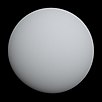HD 30177は、かじき座の方角に約177光年の距離に位置する8等級の恒星である。黄色の主系列星で、核内では水素を燃料としている。また、太陽よりも倍以上の年齢の古い恒星である[5]。周囲を公転する2つの太陽系外惑星が発見されている[6][7]。
大きさの比較
| 太陽
|
HD 30177
|

|

|
惑星系
内側を公転している惑星HD 30177 bは、2002年にアングロ・オーストラリアン天文台の惑星捜索計画の視線速度法による観測で発見された[7]。外側を公転している惑星HD 30177 cは、ラ・シヤ天文台の観測結果も含め更に11年の観測結果を追加して分析したところ、主星の視線速度の変化が一つの惑星だけでは説明できないことから新たに発見された[6]。2022年には、ヒッパルコス衛星とガイア衛星によるアストロメトリ観測のデータ分析から両者の惑星の軌道傾斜角と真の質量が求められた[8]。
HD 30177の惑星[8]
名称
(恒星に近い順)
|
質量
|
軌道長半径
(天文単位)
|
公転周期
(年)
|
軌道離心率
|
軌道傾斜角
|
半径
|
| b
|
8.403+1.241
−0.489 MJ
|
3.604+0.135
−0.147
|
6.884+0.014
−0.012
|
0.207+0.012
−0.017
|
85.393+14.354
−18.742°
|
—
|
| c
|
6.150+1.308
−0.341 MJ
|
10.258+0.535
−0.480
|
33.088+1.596
−1.207
|
0.039+0.005
−0.013
|
98.016+16.025
−24.235°
|
—
|
脚注
注釈
- ^ a b パーセクは1 ÷ 年周視差(秒)より計算、光年は1÷年周視差(秒)×3.2615638より計算
- ^ 視等級 + 5 + 5×log(年周視差(秒))より計算。小数第1位まで表記
出典
- ^ a b c d e f g h i j “HD 30177 -- Star”. SIMBAD. CDS. 2022年9月11日閲覧。
- ^ a b c d e f g Barbato, D.; Sozzetti, A.; Desidera, S. et al. (2018). “Exploring the realm of scaled solar system analogues with HARPS”. Astronomy and Astrophysics 615: 21. arXiv:1804.08329. Bibcode: 2018A&A...615A.175B. doi:10.1051/0004-6361/201832791. A175.
- ^ Butler, et al. (2006-07). “Catalog of Nearby Exoplanets”. Astrophysical Journal 646 (1): 505-522. Bibcode: 2006ApJ...646..505B. doi:10.1086/504701.
- ^ Bonfanti, A.; Ortolani, S.; Piotto, G.; Nascimbeni, V. (2015). “Revising the ages of planet-hosting stars”. Astronomy and Astrophysics 575: 17. arXiv:1411.4302. Bibcode: 2015A&A...575A..18B. doi:10.1051/0004-6361/201424951. http://www.aanda.org/articles/aa/full_html/2015/03/aa24951-14/aa24951-14.html.
- ^ Takeda, Genya; et al. (2007-02), “Structure and Evolution of Nearby Stars with Planets. II. Physical Properties of ~1000 Cool Stars from the SPOCS Catalog”, Astrophysical Journal Supplement 168: 297
- ^ a b Wittenmyer, Robert A.; et al. (2017-04), “The Anglo-Australian Planet Search. XXV. A Candidate Massive Saturn Analog Orbiting HD 30177”, Astronomical Journal 153 (4): 167, Bibcode: 2017AJ....153..167W, doi:10.3847/1538-3881/aa5f17
- ^ a b Tinney, C. G.; et al. (2003-04). “Four New Planets Orbiting Metal-enriched Stars”. Astrophysical Journal 587 (1): 423-428. Bibcode: 2003ApJ...587..423T. doi:10.1086/368068.
- ^ a b Feng, Fabo; Butler, R. Paul; Vogt, Steven S. et al. (2022). “3D Selection of 167 Substellar Companions to Nearby Stars”. The Astrophysical Journal Supplement Series 262 (1): 27. arXiv:2208.12720. Bibcode: 2022ApJS..262...21F. doi:10.3847/1538-4365/ac7e57. 21.
関連項目
外部リンク
座標:  04h 41m 54.3735s, −58° 01′ 14.724″
04h 41m 54.3735s, −58° 01′ 14.724″

